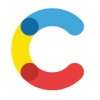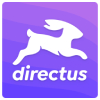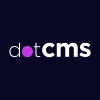Top 10 Headless CMS Platforms That Will Revolutionize Your Content Strategy
A headless CMS is a new type of content management system that is designed to separate the content creation and storage from the presentation layer of a website or application. Unlike traditional CMS platforms, which are tightly integrated with the front-end of a website or application, a headless CMS provides a content API that can be used to deliver content to any device or platform. This means that content can be used in multiple channels and formats, such as mobile apps, smartwatches, chatbots, and even virtual and augmented reality experiences. A headless CMS provides greater flexibility and agility for organizations by enabling changes to the presentation layer to be made without affecting the content, and content to be reused and repurposed across multiple channels and platforms.

Agility is a Headless, cloud-native, API-First Content Management Platform hosted on Microsoft Azure.
Visit website➔
The drag & drop headless CMS. Eliminate long delays, missed deadlines, and rigid templates. Leverage our Visual Headless CMS to visually build and optimize web and mobile experiences on your existing sites and apps to drive growth, faster.
Visit website➔

More than a headless CMS, Contentful is the API-first composable content platform to create, manage and publish content on any digital channel.
Visit website➔
Cosmic is a Headless CMS that empowers you to create, edit, and manage content across limitless websites and applications, from one convenient interface.
Visit website➔
Open source content management for your Git workflow. Use Decap CMS with any static site generator for a faster and more flexible web project.
Visit website➔
With over 22 million downloads, Directus is the world's first Open Data Platform for instantly turning any SQL database into an API and beautiful no-code app.
Visit website➔
dotCMS is a Open Source Hybrid CMS — built on leading Java technology. We are the next-generation platform that supports both the flexibility of a headless CMS, with the efficiency of traditional content authoring.
Visit website➔

Sanity empower teams of all sizes with real-time collaboration, advanced version control and more.
Visit website➔
Strapi is the leading open-source headless CMS. It’s 100% JavaScript and fully customizable.
Visit website➔Good to know...
What is a Headless CMS?
With a headless CMS, the content is stored in a central repository and can be accessed and delivered to any device or platform via an API. This means that content can be used in multiple channels and formats, such as mobile apps, smartwatches, chatbots, and even virtual and augmented reality experiences.
Because a headless CMS separates content from presentation, it provides greater flexibility and agility for organizations. Changes to the presentation layer can be made without affecting the content, and content can be reused and repurposed across multiple channels and platforms.
Some benefits of a headless CMS include:
- Increased flexibility: A headless CMS allows content to be delivered to any device or platform, without being constrained by the limitations of a traditional CMS.
- Improved scalability: A headless CMS can handle large volumes of content and traffic, making it ideal for organizations with complex needs.
- Simplified content creation and management: A headless CMS provides a streamlined interface for content creation and management, making it easy for non-technical users to create and update content.
- Faster time to market: With a headless CMS, content can be developed and published quickly, without being slowed down by the development of the front-end.
- Better security: By separating content from presentation, a headless CMS provides an additional layer of security, reducing the risk of vulnerabilities and breaches.
Overall, a headless CMS provides organizations with greater flexibility and agility, allowing them to deliver content to any device or platform, while simplifying content creation and management.
What are some cons about a headless CMS?
While headless CMSs offer many benefits, they also have some drawbacks that organizations should consider before adopting one. Here are some potential cons of using a headless CMS:
- Technical expertise required: Headless CMSs often require a higher level of technical expertise to implement and maintain compared to traditional CMS platforms. This can make it more difficult for non-technical users to manage content.
- More development work: Because the presentation layer is decoupled from the CMS, more development work is required to build and maintain the front-end of the website or application.
- Higher cost: Headless CMSs can be more expensive to implement and maintain, especially if custom development work is required.
- Potential performance issues: Because a headless CMS requires multiple requests to load a page, it can potentially lead to slower performance and page load times.
- Lack of WYSIWYG editor: Many headless CMSs do not have a WYSIWYG editor, which can make it difficult for non-technical users to create and edit content.
- Limited plugin options: Because headless CMSs are newer and less popular than traditional CMS platforms, there may be fewer plugin options available for extending functionality.
Overall, organizations should carefully consider the pros and cons of using a headless CMS before deciding whether it is the right choice for their needs. While a headless CMS can provide greater flexibility and agility, it may also require more technical expertise and development work, and may come with a higher cost.
How does a headless CMS handle content storage and retrieval, and how is content delivered to the front-end?
A headless CMS decouples content creation and storage from content presentation. This means that the CMS does not control the front-end presentation layer of a website or application. Instead, the CMS provides content through an API that can be accessed by any front-end technology, including web, mobile, and IoT applications.
Content is typically stored in a database or content repository, and it can be structured using different content models or schemas. Headless CMS platforms typically offer a range of content types or fields, allowing content creators to define content structure and layout. Content can include text, images, videos, and other media.
Content is delivered to the front-end through APIs, typically REST or GraphQL. The front-end can make API calls to retrieve specific content, and the CMS will respond with the requested data in a structured format, such as JSON or XML.
This decoupled approach to content storage and delivery provides greater flexibility and scalability in content management. Front-end developers can use any technology or framework to build the presentation layer, and content creators can focus on creating and managing content without being limited by a specific presentation layer. Additionally, because the CMS provides content through APIs, it can be easily integrated with other tools and platforms, such as e-commerce systems, social media platforms, and marketing automation tools.
What types of websites are best suited for a headless CMS platform?
Headless CMS platforms are particularly well-suited for websites or applications that require flexibility in the front-end design and presentation layer, or that have complex content needs.
Websites or applications that have a lot of different content types, such as e-commerce sites, news or media sites, and educational platforms, can benefit from a headless CMS because it allows for more granular control over content structure and layout. This is particularly useful when different content types have different formatting or layout requirements.
Headless CMS platforms are also a good fit for websites or applications that require multiple front-ends or channels. For example, a website might have a web front-end, a mobile app, and a voice assistant interface, all of which need access to the same content. With a headless CMS, content can be accessed and delivered through APIs to any front-end, making it easier to maintain consistency across different channels.
Finally, headless CMS platforms are well-suited for websites or applications that require a high degree of customization and control over the presentation layer. With a traditional CMS, the front-end design is often tightly coupled to the CMS, which can limit the ability to customize the presentation layer. With a headless CMS, front-end developers have complete control over the presentation layer, allowing for more flexibility in design and layout.
Can a headless CMS handle user management and authentication?
While a headless CMS is primarily focused on content management and delivery, many headless CMS platforms do offer user management and authentication capabilities.
User management features allow administrators to create and manage user accounts, control user access to content, and set permissions for different types of users. This can be useful for websites or applications that require multiple user roles, such as editors, authors, or contributors.
Authentication features allow users to log in to a website or application using their credentials, such as a username and password. Authentication can be integrated with existing user directories, such as LDAP or Active Directory, or it can be managed within the headless CMS itself.
Some headless CMS platforms may offer more advanced authentication features, such as social login or two-factor authentication.
However, it is important to note that user management and authentication may not be the primary focus of a headless CMS. If your website or application requires advanced user management or authentication features, you may need to consider additional tools or platforms to handle these capabilities.